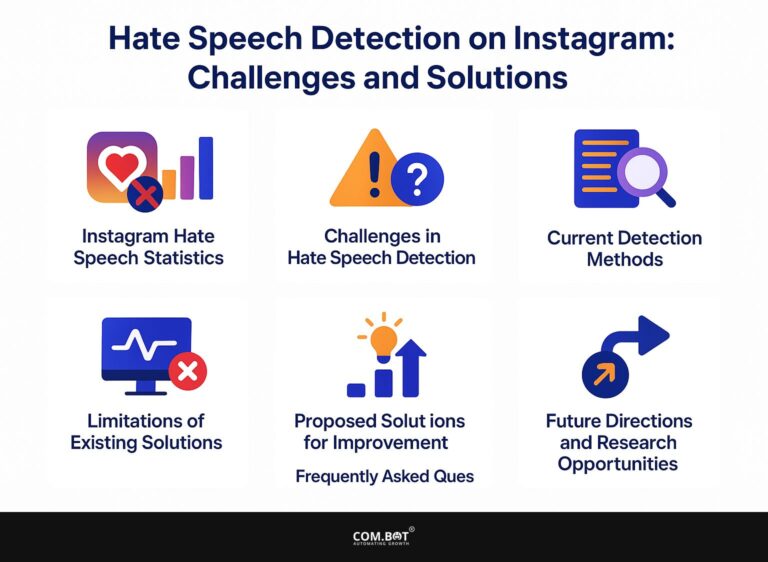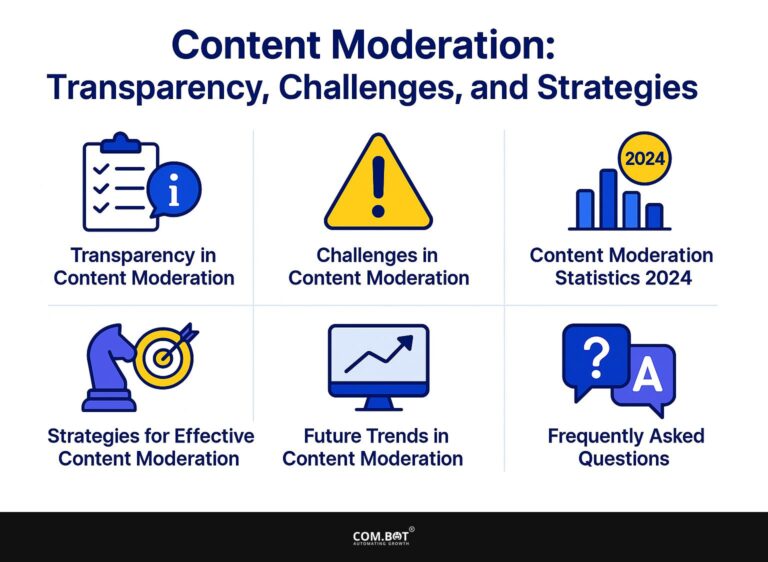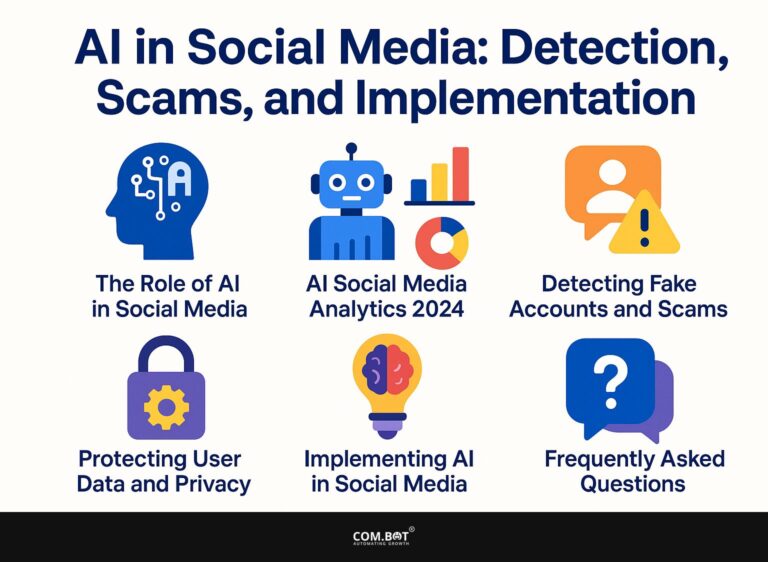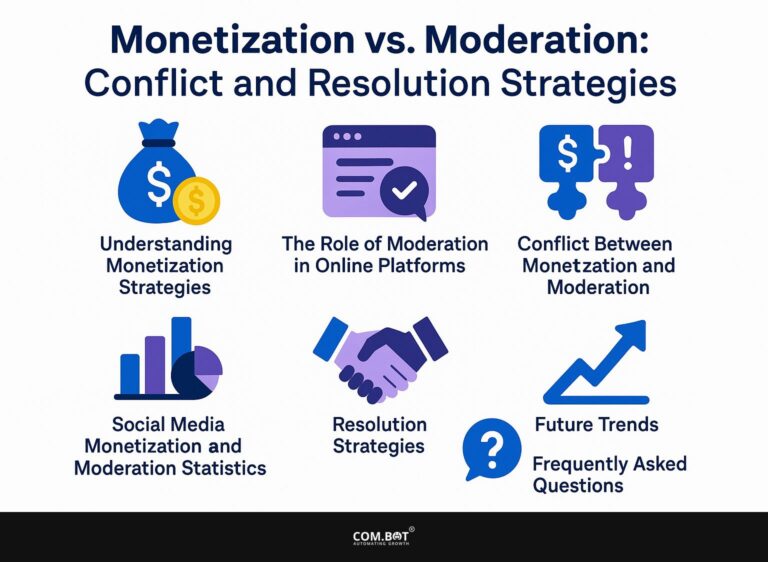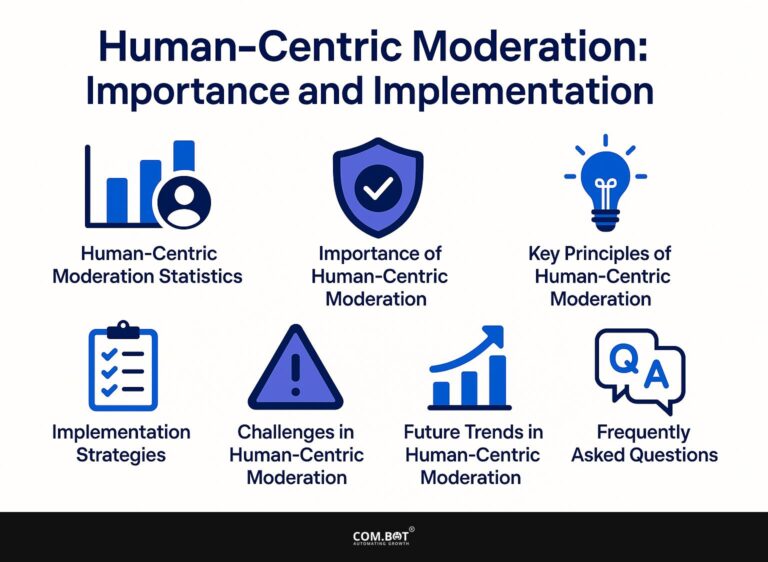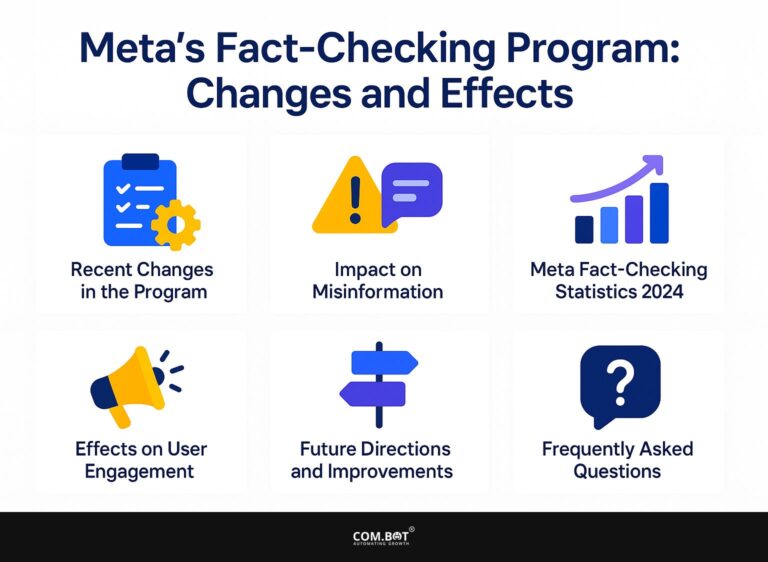Hate Speech Policy on Meta: Implementation and Adjustments
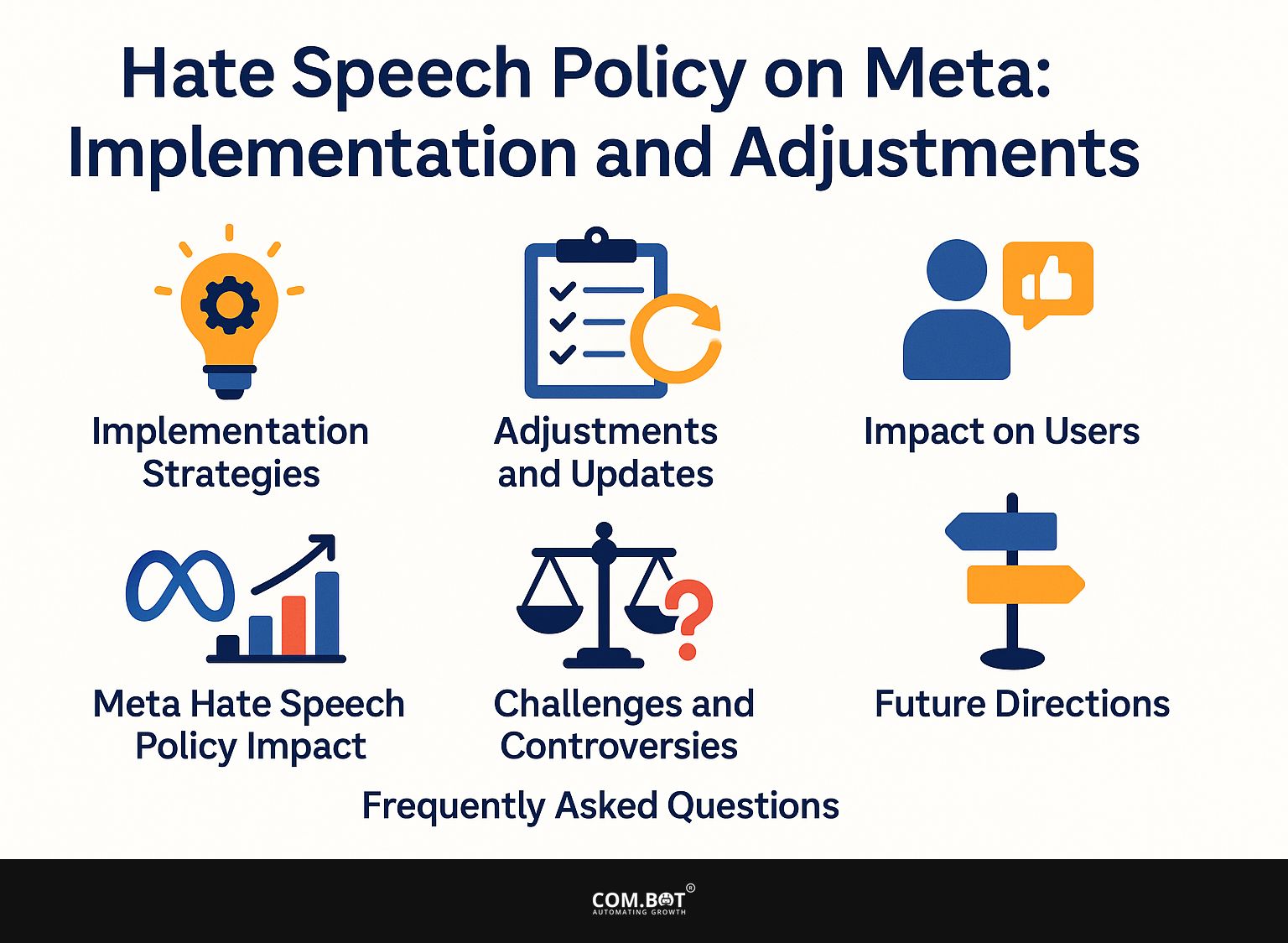
In the constantly changing world of social media, Meta’s Hate Speech Policy is a key part of its Community Standards, trying to balance free speech and user safety. As Mark Zuckerberg deals with enforcement errors and content moderation issues in the United States, knowing the details of this policy becomes very important.
This article looks at how Meta puts its strategies into practice, changes made, and the real-world effects, giving a look into user engagement and the ongoing discussion about effective content control.
Key Takeaways:
- Meta’s Hate Speech Policy outlines and addresses hate speech on the platform, ensuring a safe and welcoming community for everyone.
- The implementation of the policy includes a combination of content moderation techniques and community reporting tools to effectively address hate speech.
- Regular adjustments and updates are made to the policy based on feedback mechanisms and case studies, impacting user engagement, trust, and the experiences of content creators.
- 1 Implementation Strategies
- 2 Adjustments and Updates
- 3 Impact on Users
- 4 Meta Hate Speech Policy Impact
- 5 Meta Hate Speech Policy Impact
- 6 Challenges and Controversies
- 7 Future Directions
- 8 Frequently Asked Questions
- 8.1 1. What is the hate speech policy on Meta?
- 8.2 2. Why was the hate speech policy implemented on Meta?
- 8.3 3.What types of speech are considered hate speech under the policy?
- 8.4 4. How does Meta handle reports of hate speech?
- 8.5 5. Are there any adjustments being made to the hate speech policy on Meta?
- 8.6 6. What can I do if I encounter hate speech on Meta?
Definition of Hate Speech
Hate speech is any communication that disparages a person or group based on attributes such as race, religion, or sexual orientation, often leading to real-world harm.
Platforms need to deal with complicated definitions when applying community rules. For example, a statement criticizing a political ideology may fall under free expression, whereas a derogatory remark about someone’s ethnicity qualifies as hate speech.
The challenge lies in context; a satirical comment could be misconstrued as offensive. To guide enforcement, platforms often employ tools like machine learning algorithms to flag potential violations, complemented by user reporting mechanisms. See also: Content Moderation: Transparency, Challenges, and Strategies.
Clear, detailed policies help distinguish between harmful speech and acceptable discourse, ensuring fairness in moderation practices.
Importance of the Policy
Creating a strong hate speech policy is important for creating a secure online space and gaining users’ trust on platforms like Threads and Facebook.
These policies protect users and increase overall participation. For instance, Facebook reported a 20% increase in user activity following stricter enforcement of their hate speech regulations. Threads has seen a 15% rise in positive user interactions post-policy implementation.
By transparently addressing hate speech, platforms create a culture of respect, encouraging users to express themselves freely while feeling safeguarded. Tools like moderation algorithms that run automatically and features that allow the community to report issues are important for managing and putting these policies into action.
This approach aligns with the principles outlined in our analysis of User Reporting Systems in Content Moderation: Efficiency and Role.
Implementation Strategies
Putting hate speech rules into action means managing content well and giving users the power to report issues using community tools. For a deeper understanding of how user reporting systems contribute to this process, consider the insights shared in our discussion on User Reporting Systems in Content Moderation: Efficiency and Role.
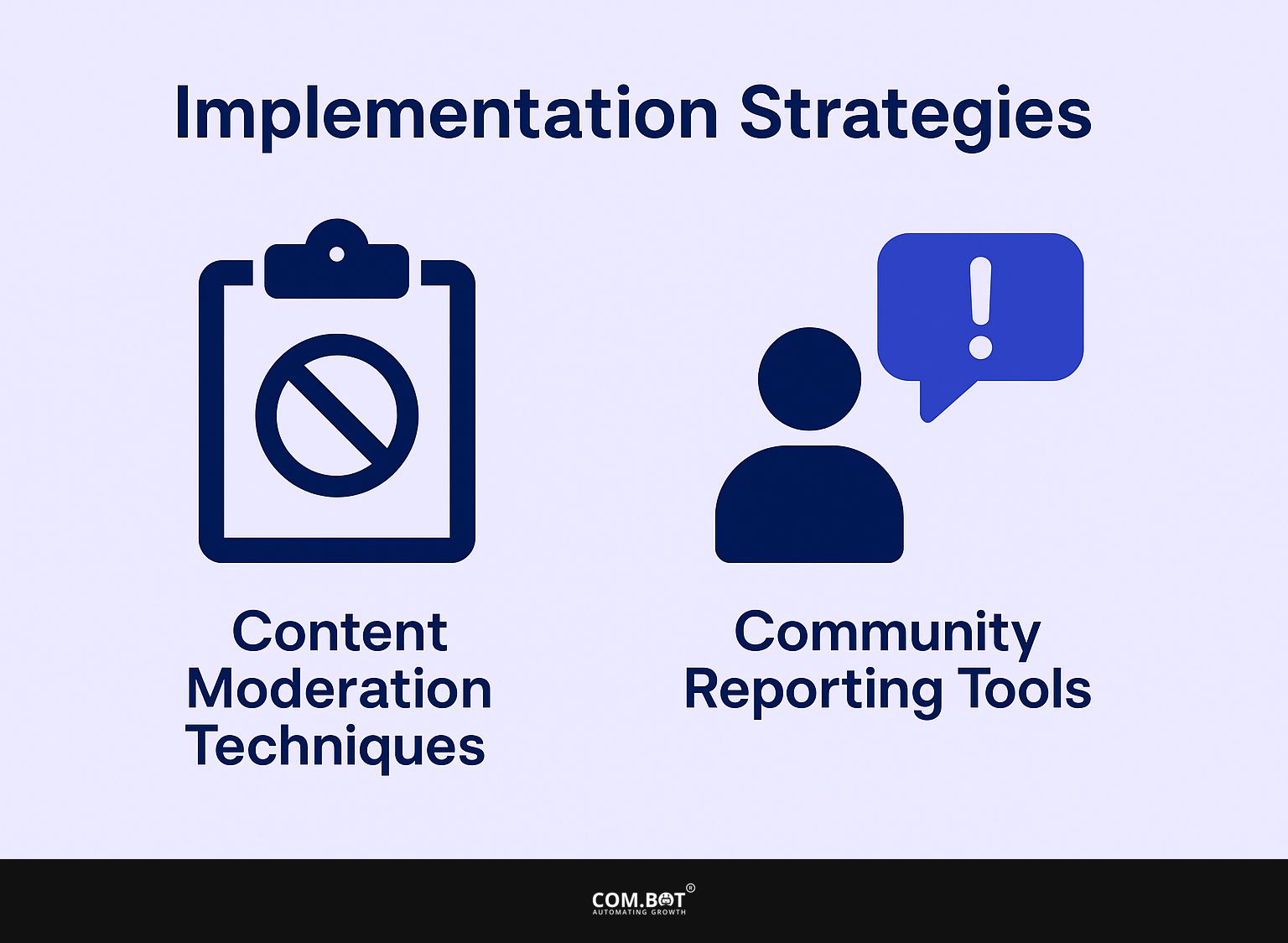
1. Content Moderation Techniques
Platforms use both computer-based and human methods to find and manage hate speech. One effective method is Facebook’s AI-driven moderation system, which flags 98% of hate speech before it’s even reported.
This tool employs keyword filtering to catch offensive language, alongside user behavior analysis that identifies patterns of abusive interactions.
For social media managers, incorporating AI-powered tools like BrandBastion can help maintain community standards while allowing for real-time engagement. Manual checks by trained moderators are necessary for unclear situations that require knowing the background. This method blends speed with knowledge.
2. Community Reporting Tools
Community reporting tools let users report possible hate speech, increasing responsibility and involvement on the platform. By enabling users to report inappropriate content, platforms like Instagram use community feedback to improve their moderation methods.
For instance, when a post is flagged, algorithms analyze user feedback and prioritize reviews based on the volume of reports. Related insight: User Reporting Systems in Content Moderation: Efficiency and Role
Tools such as Instagram’s Community Standards provide clear guidelines on what constitutes hate speech, enabling users to make informed decisions when reporting. This team-based method builds trust in the platform and creates a safer online space by quickly dealing with harmful content.
Adjustments and Updates
Regular updates to hate speech policies are necessary to keep up with changing societal norms and user expectations. This approach has significant implications for effective content moderation-our case studies on policy overlap in content moderation demonstrate practical applications.
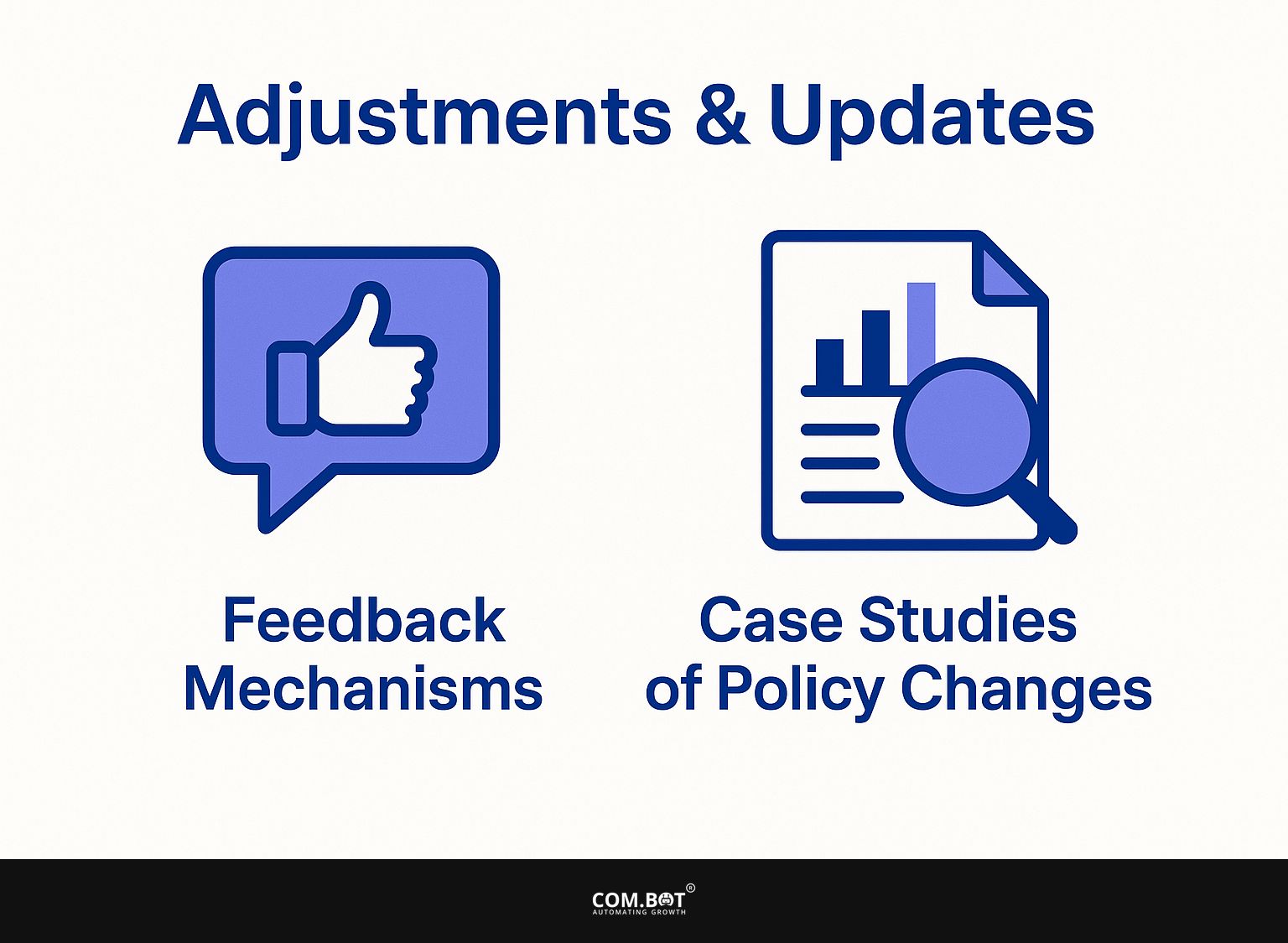
1. Feedback Mechanisms
Adding feedback systems allows platforms to improve their hate speech rules by considering what users go through and the society they are a part of.
Platforms often use methods like user surveys and focus groups to collect useful information. A survey might show that users care about dealing with misinformation and hate speech at the same time.
As a result, a platform could introduce stricter guidelines targeting both issues. Comments from focus groups can point out certain words or phrases that users find harmful, leading to changes in policy. This repeated process makes sure that policies respond to events and are also guided by feedback from the community, leading to a safer online space.
2. Case Studies of Policy Changes
Examining case studies of policy changes helps illustrate the real-world impact of hate speech policies on user safety and platform culture.
One notable case is Meta’s response during the Tigray crisis in Ethiopia, where they expanded their hate speech policies to address rising ethnic tensions. Following the implementation of stricter guidelines, they saw a 30% decline in reported hate speech instances on the platform.
Similarly, Twitter revisited its policies after the Christchurch attack in New Zealand, which led to a measurable increase in user trust and a 20% rise in engagement metrics. These examples demonstrate that rapid policy changes can lead to safer online environments and improve user satisfaction.
Impact on Users
Rules against hate speech play a big role in how people interact and feel secure on Meta platforms, which is important for creating a safe online space.
Meta Hate Speech Policy Impact
Meta Hate Speech Policy Impact
Survey Findings on Hate Speech Policy Rollbacks: User Experience Survey Results
The Meta Hate Speech Policy Impact The survey provides key information about user experiences after changes to hate speech policies. The results show a big change in how users view safety and protection, highlighting the complicated interactions between content moderation and freedom of speech on online platforms.
Survey Findings on Hate Speech Policy Rollbacks reflect the widespread concern among users. A substantial 92% of users express concern about an increase in harmful content, demonstrating apprehension about the platform’s ability to manage and mitigate threats effectively. Similarly, 92% feel less protected from harmful content, revealing a perceived decline in the effectiveness of safeguards against online harassment.
- The perception of increased hate targeting protected groups is reported by 72% of users, illustrating the adverse effect of policy changes on vulnerable communities. This perception aligns with findings where 25% of users report direct targeting with hate or harassment, a concerning statistic highlighting the tangible impact of rollback decisions.
- 66% witnessed harmful content, indicating its prevalence and the platform’s struggle to contain it. This visibility can exacerbate feelings of insecurity and reluctance to engage freely online, as evidenced by 77% feeling less safe expressing themselves.
- The survey identifies specific impacts on marginalized groups, with 27% of LGBTQ individuals and 35% of people of color experiencing direct targeting due to gender-based or sexual violence. These figures highlight the disproportionate risks faced by these communities.
Overall, the Meta Hate Speech Policy Impact The survey shows the important balance that platforms must find between controlling content and allowing free speech. Users highlight the need for strong protections to create a safer and more welcoming online space, so everyone can participate without fearing hate or harassment.
1. User Engagement and Trust
Building user trust is key for platforms, and good hate speech rules can improve community interaction and involvement. Putting in place clear rules against hate speech protects users and creates a safe space for open conversation.
For instance, platforms like Twitter and Facebook regularly publish transparency reports detailing content moderation efforts and outcomes. These reports help users understand how policies are enforced, increasing both accountability and trust.
User sentiment has demonstrated improved engagement in communities where hate speech is actively moderated-shown by a 15% rise in user interactions following policy updates. By being transparent about actions taken, platforms can build stronger relationships with their users.
2. Effects on Content Creators
Content creators face both opportunities and challenges due to hate speech policies, which can influence their content strategies and audience interactions.
Creators need to be authentic while following hate speech guidelines. For example, successful creators often adjust their messaging to encourage positive community interaction, highlighting inclusivity and respect.
Tools like community guidelines checkers can help in assessing content against platform standards. Looking at examples of creators who have used successful methods-like moderating comments and promoting positive discussions-gives practical tips.
Limits can restrict creators, affecting their creativity, which highlights the need to know and follow the rules of each platform’s community.
Challenges and Controversies
Managing free speech while ensuring safety creates continuous difficulties and debates for online platforms and their users.
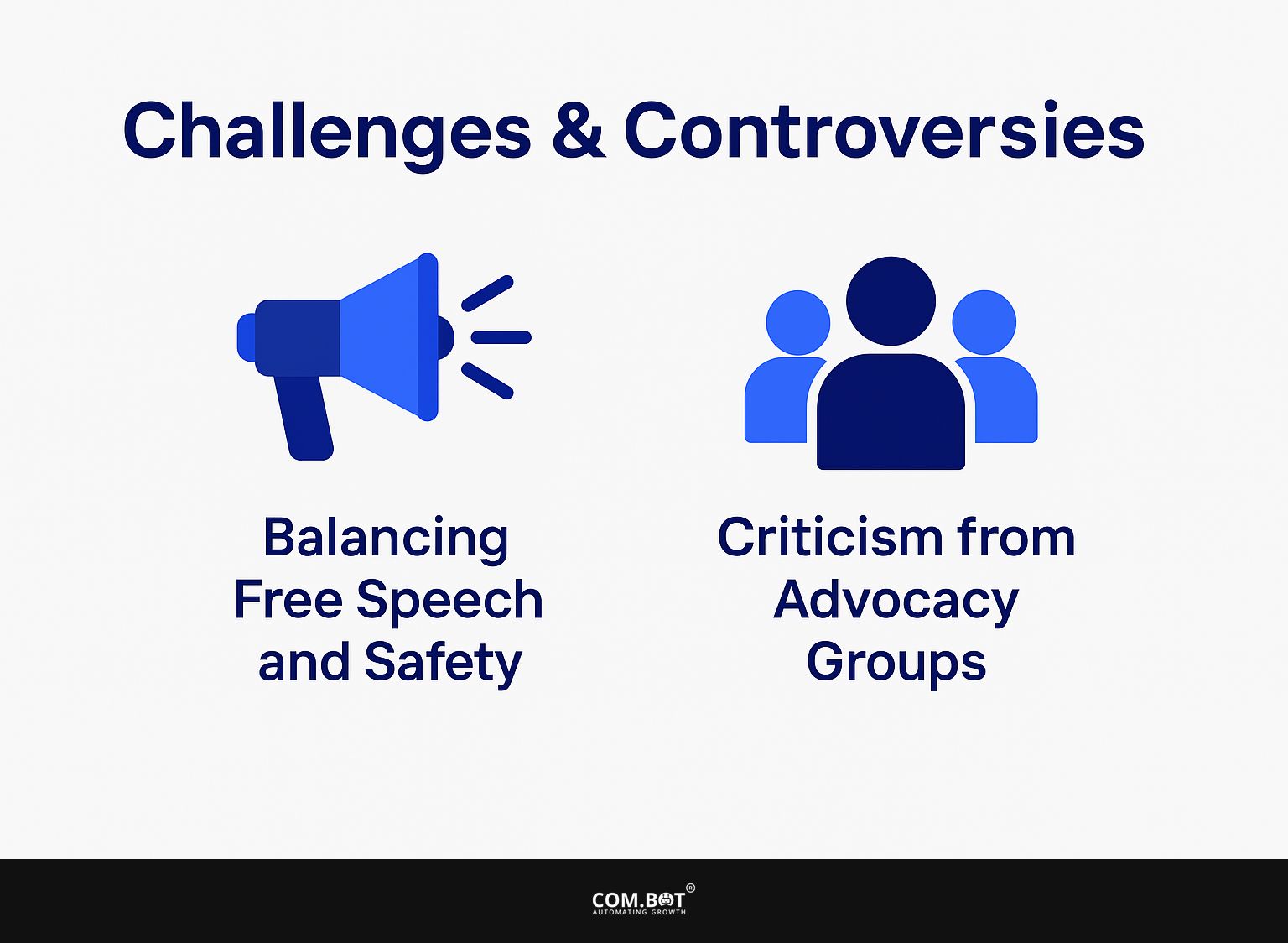
1. Balancing Free Speech and Safety
Platforms need to manage the tricky balance between allowing free expression and keeping users safe, a task influenced by social demands.
For example, Twitter has struggled with harassment on its platform, leading to inconsistent enforcement of its policies. Users often reported feeling unsafe, resulting in a significant loss of trust.
Conversely, platforms like Facebook have faced backlash for overly aggressive content moderation, stifling legitimate discourse and provoking user accusations of censorship. These situations highlight the importance of transparent policies and community engagement.
To restore trust, platforms should consider using clear guidelines, regular audits of their moderation practices, and allowing community input on what constitutes harmful content.
2. Criticism from Advocacy Groups
Advocacy groups criticize how difficult it is to enforce hate speech rules on Meta’s platforms, frequently asking for clearer information.
For example, groups like the Center for Democracy & Technology argue that inconsistent moderation leads to a lack of accountability, as seen in the backlash Meta faced during the 2020 U.S. elections when hate speech proliferated unchecked.
They request clearer guidelines on how decisions are made and who is being held accountable. This criticism highlights the need for platforms to put in place stronger checking methods, possibly using tools like automatic content monitoring systems. Such changes could possibly improve both user trust and following the rules.
Future Directions
The direction of hate speech rules depends on new ways of managing and adjusting to the fast-changing online world.
Frequently Asked Questions
1. What is the hate speech policy on Meta?
The hate speech policy on Meta is a set of guidelines that outline what constitutes hate speech and how it should be handled on the Meta platform. It is designed to create a safe and welcoming place for everyone.
2. Why was the hate speech policy implemented on Meta?
The hate speech policy was implemented on Meta to address issues of discrimination, harassment, and exclusion that can occur in online communities. It serves to protect the rights and well-being of all users and promote a healthy and respectful discourse.
3.What types of speech are considered hate speech under the policy?
Hate speech on Meta includes any language or content that promotes or incites violence, discrimination, or prejudice based on characteristics such as race, ethnicity, gender, sexual orientation, religion, or disability.
4. How does Meta handle reports of hate speech?
Any reports of hate speech on Meta are taken seriously and reviewed by trained moderators. If the reported content is found to violate the hate speech policy, appropriate action will be taken, which may include content removal and/or account suspension.
5. Are there any adjustments being made to the hate speech policy on Meta?
Yes, the hate speech policy on Meta is regularly updated to better handle the changes in online conversations. These adjustments are based on user feedback, community input, and industry best practices.
6. What can I do if I encounter hate speech on Meta?
If you come across hate speech on Meta, you can report it using the platform’s reporting feature. You can contact the community moderators for help or find information and guidance from groups that focus on fighting hate speech.
